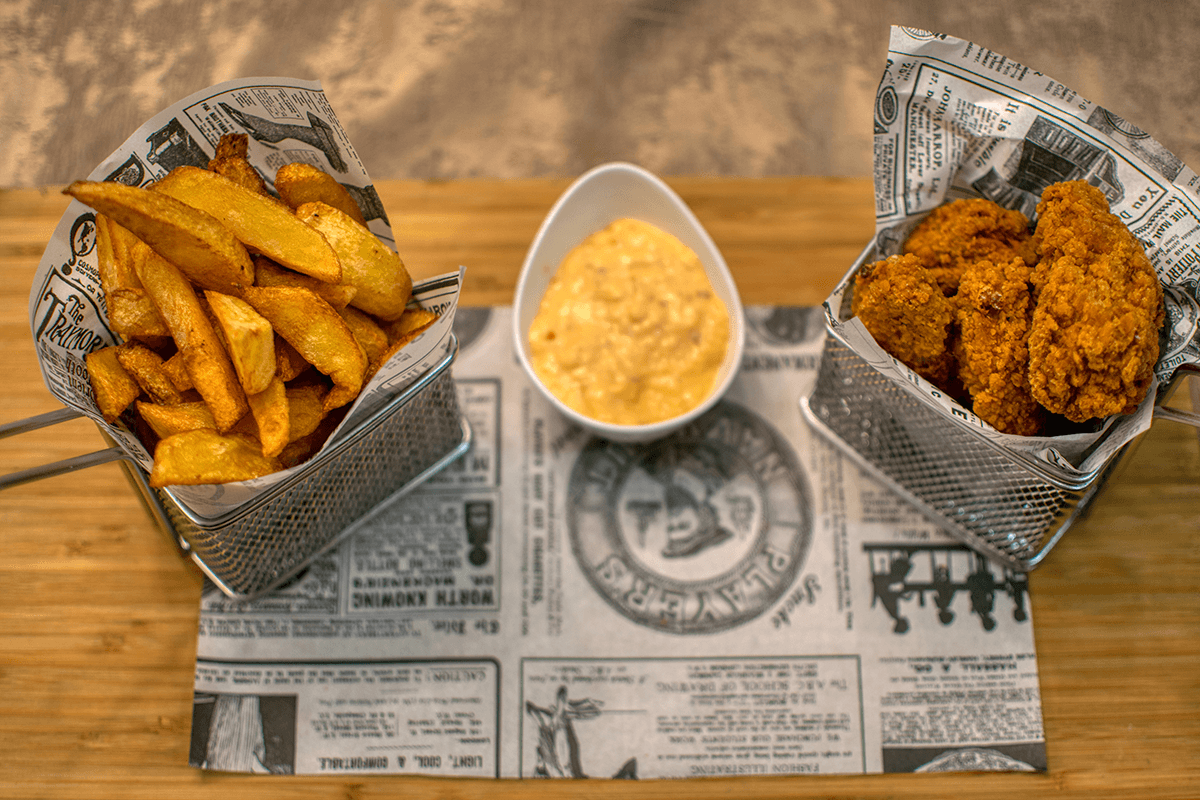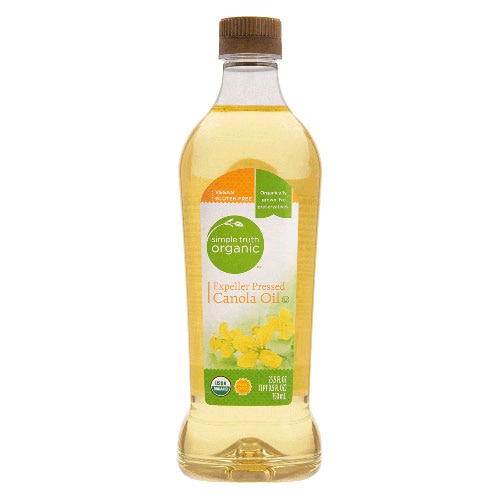Yes, Canola oil is good for frying due to its high smoke point and low levels of saturated fats. Canola oil is a popular and versatile cooking oil used by many people for various types of cooking, including frying.
Obtained from the crushed seeds of the canola plant, this oil contains high levels of monounsaturated fatty acids, making it a healthy option for regular use. In addition to its nutty flavor and light texture, canola oil has a high smoke point, making it suitable for frying at high temperatures without breaking down into harmful compounds.
Some studies have also shown that canola oil is effective in reducing inflammation and promoting heart health. However, like any other oil, it should be used in moderation to avoid excessive consumption of calories and fats.
The Controversy Surrounding Canola Oil
Canola oil, extracted from the canola plant, has been a topic of debate among nutrition experts due to its high smoke point and neutral flavor. Some experts claim that it is a healthier option for frying, while others argue that its production process makes it hazardous to human consumption.
History Of Canola Oil
The canola plant was originally bred in Canada in the late 1960s as a low-acid variant of rapeseed, which was considered unfit for human consumption due to its high levels of erucic acid. The name “canola” was derived from the phrase “Canadian oil, low acid”. The low-acid canola oil soon gained popularity due to its neutral taste and health benefits.
Debate Over Health Benefits
While canola oil is rich in monounsaturated fat and contains omega-3 fatty acids, which are known to have several health benefits, its high content of polyunsaturated fats has been a topic of concern for some experts. Additionally, the refining process used to extract the oil involves high heat, solvents, and bleaching agents, which may affect its quality and compromise its nutritional value.
Understanding Canola Oil’s Fat Content
Canola oil is popular for its low level of saturated fat, making it a healthier option for frying than other oils. However, it’s essential to understand its fat content to make an informed decision. Canola oil contains unsaturated fats, which have multiple health benefits, including reducing the risk of heart disease. These unsaturated fats include monounsaturated fats and polyunsaturated fats. Among the polyunsaturated fats, canola oil contains a type called omega-3 fatty acids, which have a positive effect on the brain and heart health. When frying in canola oil, it’s crucial to keep the temperature under the oil’s smoke point to prevent producing harmful compounds. By keeping these factors in mind, canola oil can be an excellent choice for frying.
Smoke Point And Temperature Limitations
| Smoke Point | Temperature Limitation | |
|---|---|---|
| Unrefined Canola Oil | 225°C (437°F) | Not suitable for frying |
| Refined Canola Oil | 204-232°C (400-450°F) | Good for frying |
Canola oil is a popular oil for frying, but it is important to understand its smoke point and temperature limitations.
The smoke point of canola oil varies depending on whether it is unrefined or refined. Unrefined canola oil has a low smoke point of 225°C (437°F) and is not suitable for frying. Its low smoke point makes it unsuitable for cooking at high temperatures.
Refined canola oil has a higher smoke point ranging from 204-232°C (400-450°F) and is good for frying. However, it is important to remember that prolonged exposure to high temperatures can still cause canola oil to break down and produce harmful compounds.
When frying with canola oil, it is recommended to use a thermometer to monitor the temperature and avoid exceeding the recommended temperature limitation to prevent the oil from breaking down and producing harmful compounds.
Additionally, when choosing an oil for frying, it is important to consider other factors such as flavor, nutrition, and availability.

Credit: www.healthline.com
Comparing Canola Oil To Other Frying Oils
Canola oil is a good choice for frying due to its high smoke point and ability to retain its nutritional properties. When compared to other frying oils, canola oil has health benefits such as low saturated fat and high unsaturated fat content which can help to lower bad cholesterol levels. The flavor profile of canola oil is mild and does not overpower the taste of the food being fried. On the other hand, oils like olive oil and peanut oil have distinct flavors that can change the taste of the food being fried. It is important to note that all oils have different smoke points and saturated fat levels, making it crucial to choose the right oil for the type of frying being done.
| Frying Oil | Smoke Point (°F) | Saturated Fat (%) | Flavor Profile |
|---|---|---|---|
| Canola Oil | 400-450 | 7 | Mild |
| Olive Oil | 350-410 | 14 | Fruity, Strong |
| Peanut Oil | 450-500 | 18 | Nutty |
The Importance Of Using Quality Canola Oil
Using high-quality canola oil is essential when frying various food items. Unrefined canola oil is the best option as it is extracted using natural methods and is free of harmful chemicals. Always check the label of canola oil before purchasing to ensure it is of high quality. High-quality canola oil will have a neutral taste and a high smoke point, making it perfect for deep frying.
When it comes to frying food items, the oil used can greatly affect the taste and texture of the finished product. Choosing the right oil is crucial to ensure that your food turns out perfectly. Canola oil is a great option for frying as it is low in saturated fats, high in monounsaturated and polyunsaturated fats, and has a high smoke point.
In conclusion, always choose unrefined canola oil when frying food items for the best taste and texture. Make sure to read labels carefully to ensure that the canola oil you are using is of high quality and free of harmful chemicals.
Cooking Tips For Using Canola Oil
Canola oil is a popular choice for frying due to its high smoke point and neutral flavor. However, there are certain considerations to keep in mind when cooking with this oil to ensure optimal results.
When using canola oil for frying, it’s important to choose appropriate cooking methods such as deep frying, sautéing, or stir-frying. These methods allow for the oil to be heated to a high temperature without burning.
Properly heating the oil is also crucial for successful frying. Make sure the oil reaches the desired temperature before adding food to the pan. A thermometer can be useful for monitoring the temperature.
Additionally, it’s important to avoid overcrowding the pan as this can lower the temperature of the oil and result in greasy food. Instead, cook food in batches.
Overall, canola oil can be a great option for frying when used properly. By choosing appropriate cooking methods and properly heating the oil, you can enjoy delicious and crispy fried foods at home.
How To Store Canola Oil Properly
Canola oil is a popular choice for frying due to its high smoke point and mild taste. However, it’s important to store it properly to maintain its quality and extend its shelf life. The optimal storage temperature for canola oil is between 60-70°F (15-21°C), away from heat sources and direct sunlight. It’s best to keep it in a dark, cool, and dry place like a pantry or cabinet. Make sure to tightly seal the container after use to prevent oxidation and contamination.
Canola oil typically has a shelf life of about 1-2 years when stored properly. However, factors like exposure to light, air, and heat can shorten its shelf life. It’s important to check the expiration date and smell the oil before use. If it has a rancid or off smell, it’s best to discard it.
| Do: | Don’t: |
|---|---|
| Store canola oil in a cool and dark place | Store canola oil near heat sources or direct sunlight |
| Seal the container tightly after use | Leave the container open or loosely sealed |
| Check the expiration date before use | Use canola oil past the expiration date |
| Smell the oil before use | Use canola oil with a rancid or off smell |

Credit: blogs.bcm.edu

Credit: www.vitacost.com
Frequently Asked Questions Of Is Canola Oil Good For Frying
Is Canola Oil Ok To Deep Fry?
Yes, canola oil is a good choice for deep frying due to its high smoke point and neutral flavor. It also contains a good balance of polyunsaturated and monounsaturated fats, which are considered healthier than saturated fats. However, it is still important to use proper frying techniques and not reuse the oil for too long.
Which Oil Is Best For Frying?
The best oil for frying is one with a high smoke point, such as canola oil or avocado oil. These oils can withstand high temperatures without breaking down and forming harmful compounds. It’s important to avoid oils with low smoke points, such as olive oil or butter, as they can burn and smoke at high heats.
Which Is Better For Frying Canola Or Vegetable Oil?
Canola oil is better for frying compared to vegetable oil. Canola has a higher smoke point, which means it can withstand higher temperatures without breaking down and releasing harmful chemicals. Furthermore, canola oil is lower in saturated fat compared to vegetable oil, which makes it a healthier option.
Is Canola Oil Better For Frying Than Olive Oil?
Canola oil is better for frying than olive oil because it has a higher smoke point and more neutral flavor. Olive oil can break down at high temperatures, producing harmful compounds and a strong taste. Canola oil is also lower in saturated fat, making it a healthier option for frying.
Conclusion
After exploring the facts, we can conclude that canola oil is a good choice for frying. It has a high smoke point and contains low levels of saturated fats, making it a healthier option than other vegetable oils. However, moderation is key, as excessive consumption of any oil can have negative effects on our health.
Ultimately, it’s important to find a balance and make informed choices based on your individual health needs and preferences.

